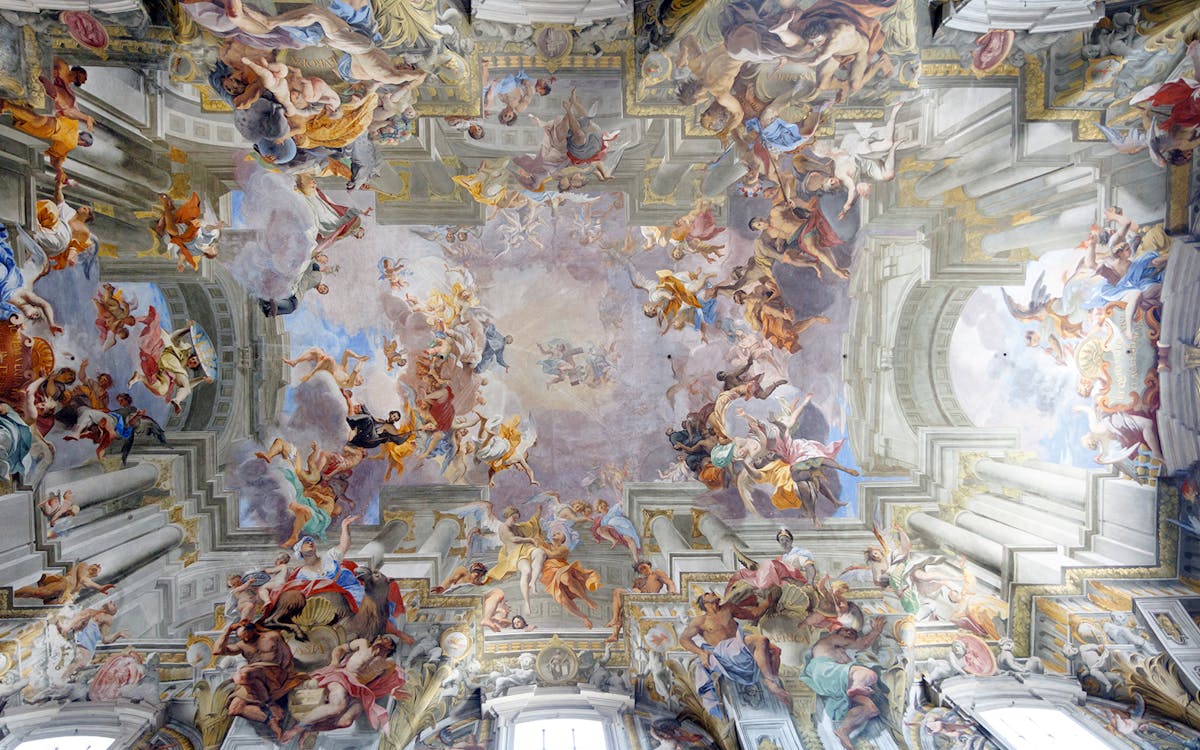What if the walls themselves could tell stories? In Italy, they do. For centuries, artists have used the fresco technique, which uses water-based pigments to merge with wet plaster to become an integral part of the wall. This method has been around since ancient times, but Italian artists really mastered it during the Renaissance.
During the medieval era, frescoes became a popular medium for decorating churches and public buildings. They served both decorative and educational purposes, illustrating biblical stories to the general populace. The Italian Renaissance (14th to 17th centuries) marked the peak of fresco painting. Artists like Giotto, Masaccio, Raphael, and Michelangelo pushed the boundaries of this technique.
Planning a trip to Italy soon? Here’s a list of places and churches where you will find some of the best frescoes in Italy. Don’t miss the chance to witness these incredible works of art firsthand!
Frescoes in Italy you must see
1. Sistine Chapel Ceiling
Location: Vatican City
Artist: Michelangelo
If you've seen photos of the Sistine Chapel ceiling, they don't do it justice. Michelangelo spent four years (1508-1512) painting this masterpiece, and it's mind-blowing in person. The whole ceiling tells stories from Genesis through nine big panels, from the creation of the world to Noah's Ark. Notice how the figures grow bigger and more dramatic as you walk towards the altar? That's Michelangelo's genius. He painted over 300 figures, cleverly using painted architecture to make the scenes feel part of the chapel itself. It's seriously impressive, especially considering he wasn’t even a painter by trade when he started the work. Beyond the scenes in Genesis, the lunettes and pendentives feature prophets and sibyls, adding further layers of meaning and visual richness.
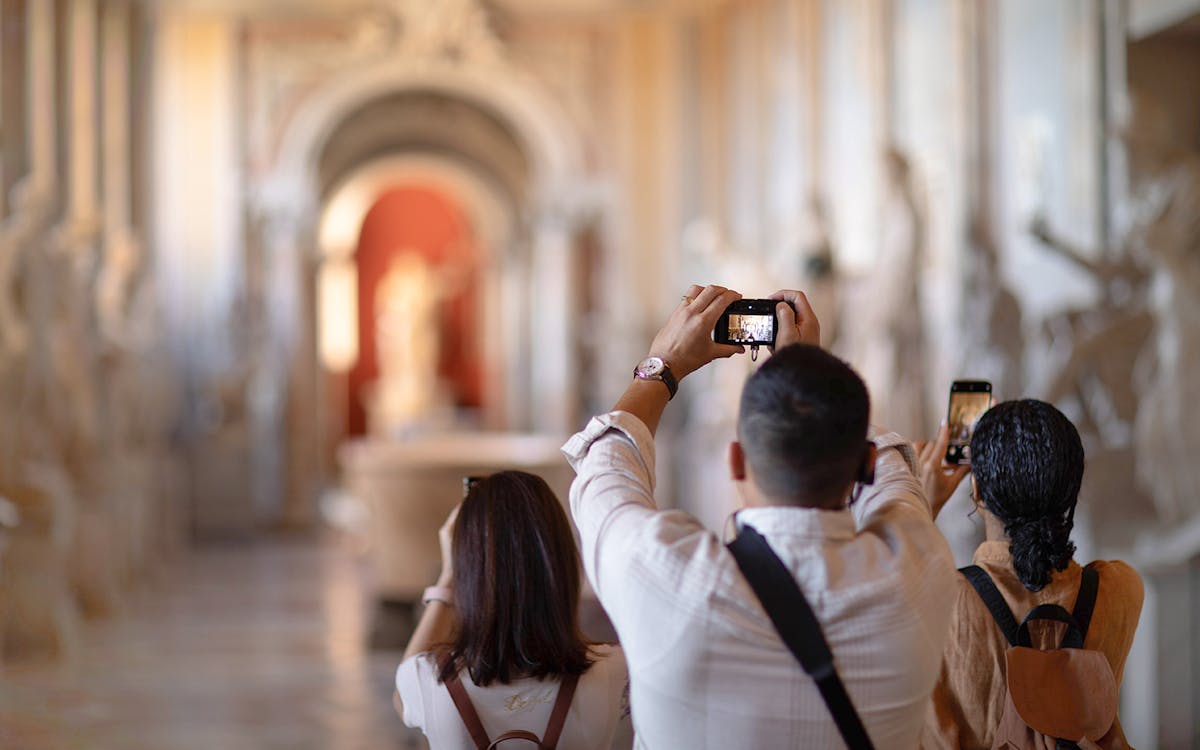
Recommended tickets to Sistine Chapel
2. Scrovegni Chapel frescoes
Location: Padua
Artist: Giotto
Giotto's frescoes in the Scrovegni Chapel, or Arena Chapel, are nothing short of legendary. Painted between 1303 and 1305 in Padua, Italy, these works transformed the city into the "Painted City," attracting artists eager to learn from his innovative techniques. This chapel is a cornerstone of Western art, breaking away from medieval conventions and paving the way for the Renaissance. Giotto's naturalism, emotional depth, and use of three-dimensionality and perspective were revolutionary. The frescoes depict the lives of the Virgin Mary and Christ, culminating in a dramatic Last Judgment. He even used a super expensive bright blue paint made from lapis lazuli (a semi-precious stone) to make everything extra special. No wonder UNESCO made it a World Heritage Site in 2021!
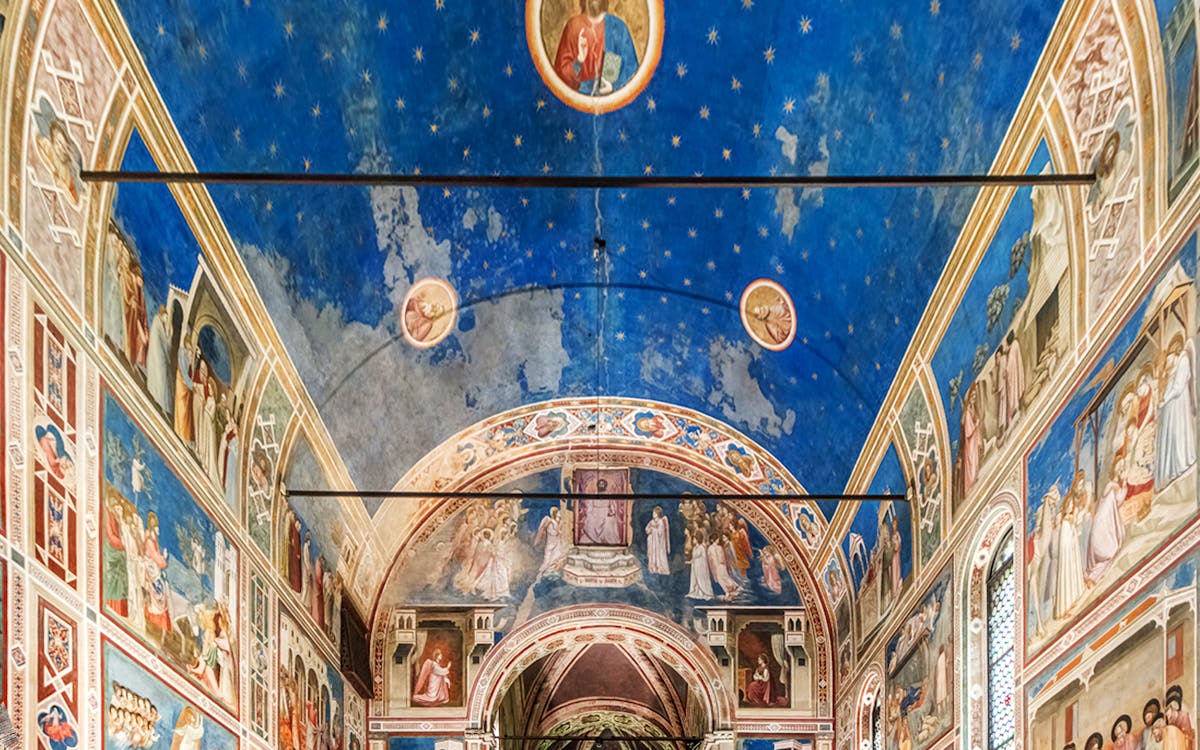
3. The Last Judgement
Location: Florence Cathedral
Artist: Vasari and Zuccari
Looking up at Florence Cathedral's dome might give you a slight neck ache, but trust us, it's worth it. The Last Judgment fresco here is enormous — covering about 10,500 square feet, making it one of the world's largest. It was painted by Giorgio Vasari and completed by Federico Zuccaro between 1572 and 1579. Organized into concentric levels, the fresco features Christ at the center, surrounded by saints, angels, and the damned. It vividly depicts heaven and hell, reflecting the theological themes of the Counter-Reformation. After Vasari's death in 1574, Zuccaro finished the work, implementing his dramatic expressions and dynamic compositions, enhancing the emotional impact of the piece. If you're interested in learning more, stop by the cathedral's museum (Museo dell'Opera del Duomo) to see some of the original tools and statues used in the cathedral.
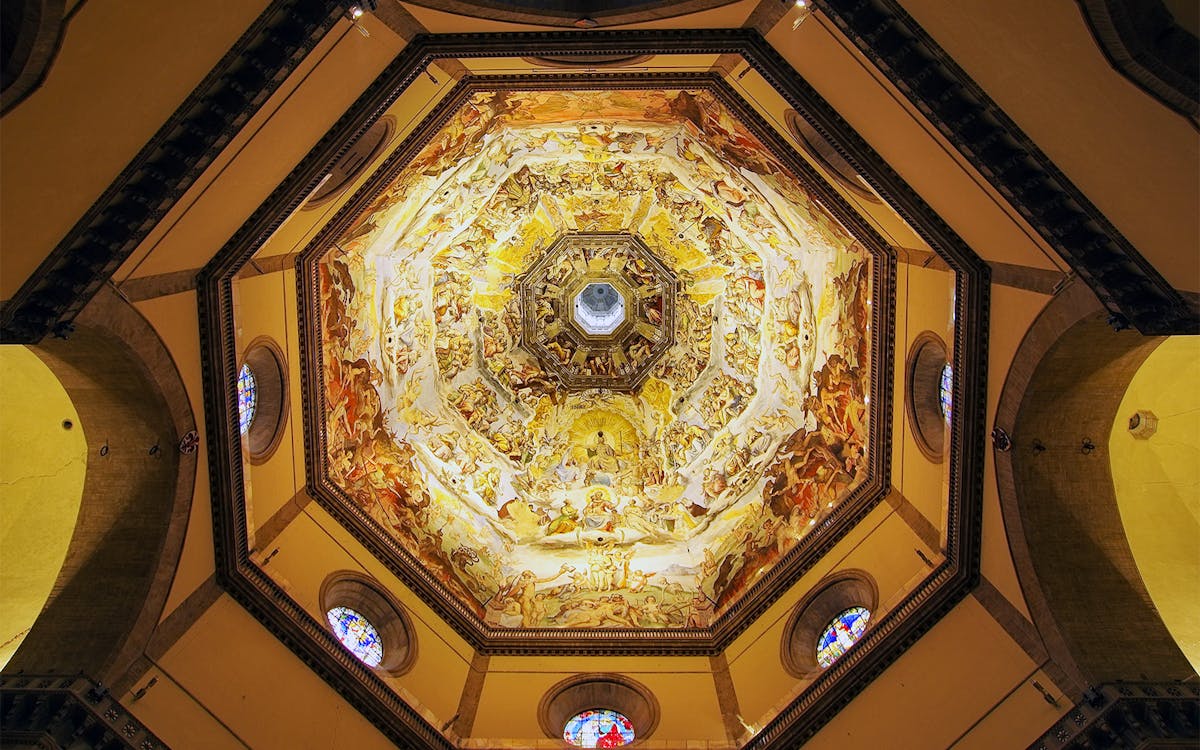
4. Brancacci Chapel frescoes
Location: Church of Santa Maria del Carmine, Florence
Artist: Masaccio, Masolino da Panicale, and Filippino Lippi
In the heart of Florence, within the Church of Santa Maria del Carmine, lies the Brancacci Chapel, a cornerstone of Renaissance art. Commissioned by Felice Brancacci, these frescoes were largely the brainchild of Masaccio and his mentor, Masolino da Panicale, who worked tirelessly from 1424 to 1428. Later, Filippino Lippi brought the cycle to its culmination in the 1480s.
These frescoes tell the story of Saint Peter's life, created by three different artists over several decades. Masaccio and his teacher Masolino started the work in 1424, bringing a new level of realism to religious art. The "Expulsion from Paradise" scene is notable for its naturalistic portrayal of Adam and Eve, with Masaccio depicting their facial expressions and body language in a remarkably human way. You'll notice a delightful contrast between Masolino's ornate touch and Masaccio's pioneering realism, a blend that inspired giants like Michelangelo and Raphael.
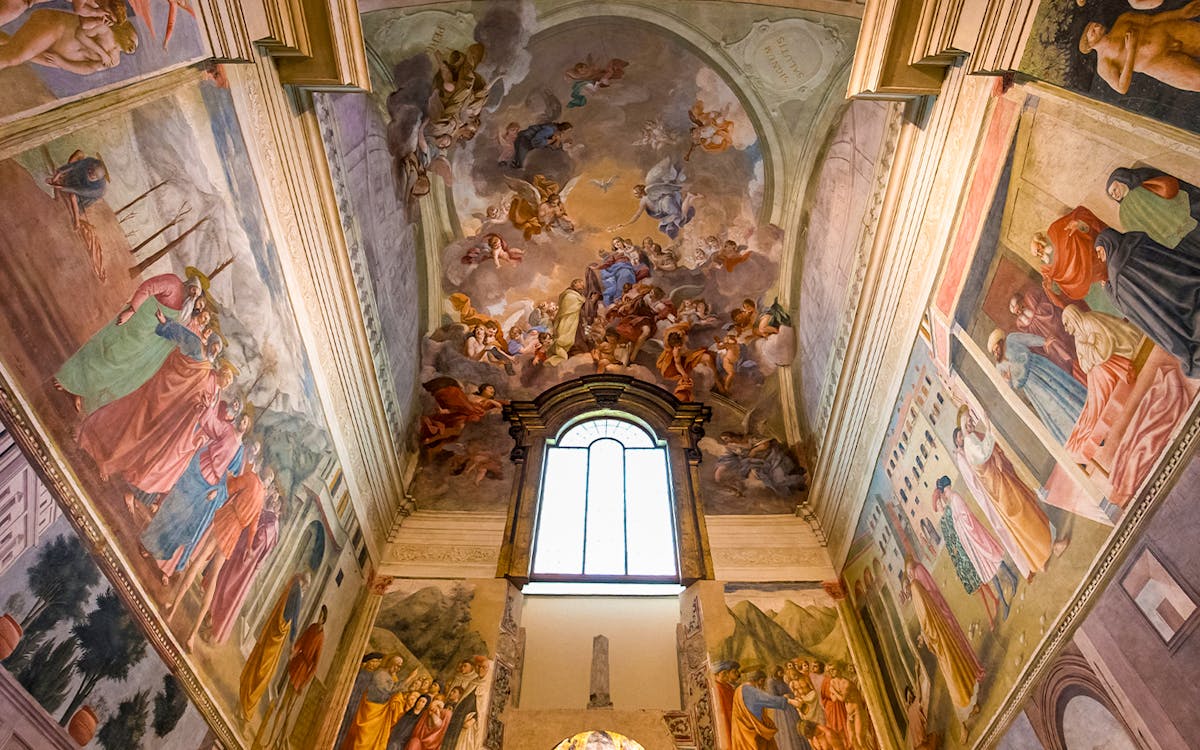
Recommended tickets to Brancacci Chapel
5. The Allegory of Good and Bad Government
Location: Palazzo Pubblico in Siena
Artist: Ambrogio Lorenzetti
Ambrogio Lorenzetti's frescoes in Siena, "The Allegory of Good and Bad Government," paint a vivid tale of governance's impact on society. Created between 1338 and 1340, these works serve as a poignant reminder to the ruling council, "The Nine," about the fruits of their decisions. Good governance is depicted as a harmonious symphony, with an idealized ruler surrounded by virtues like Justice and Concord, overseeing a thriving city and lush countryside. In stark contrast, bad governance unleashes a chaos of vices, casting a city into despair. It's amazing how relevant these 700-year-old paintings still feel today.
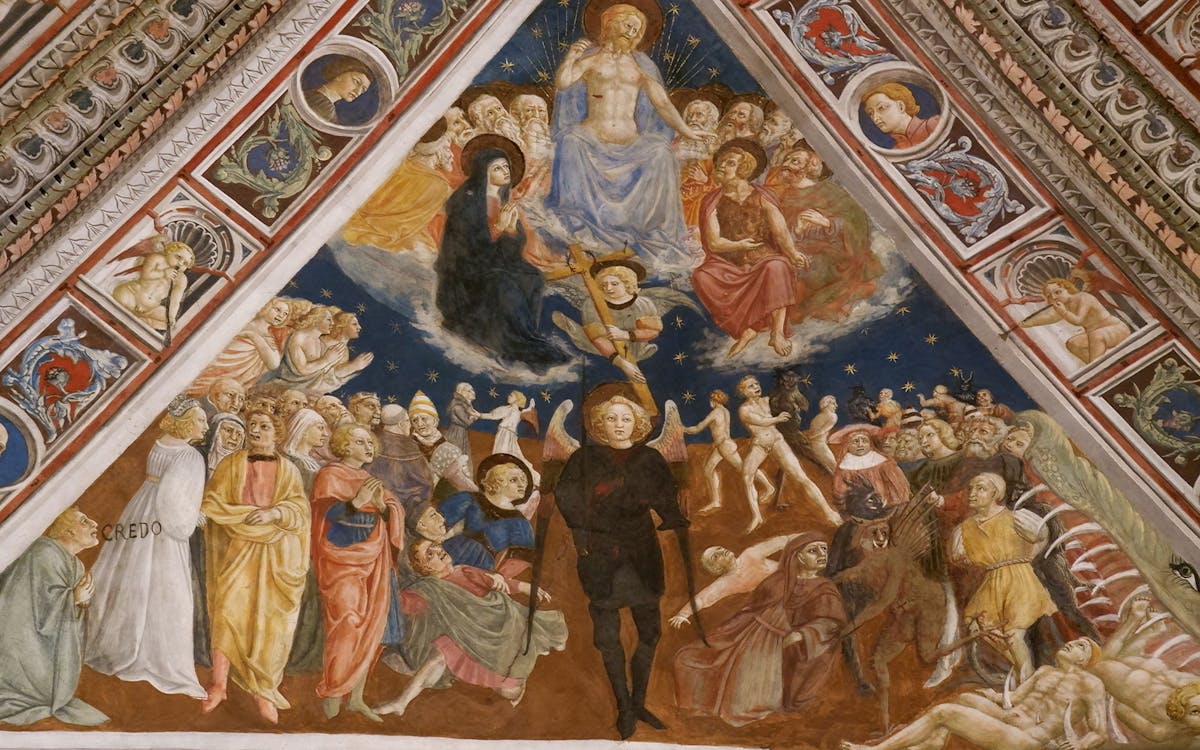
6. Medici Palace frescoes
Location: Medici Riccardi Palace, Florence
Artist: Benozzo Gozzoli
Located in the Magi Chapel of the Palazzo Medici Riccardi, Benozzo Gozzoli's frescoes, "The Procession of the Magi," are a must-see in Florence. Painted between 1459 and 1461, these works showcase Gozzoli's artistic innovation and the Medici family's influence during the Renaissance. The biblical story of the Three Magi is intertwined with members of the Medici family and other notable Florentines, creating a unique blend of art and history.
Gozzoli's mastery of the International Gothic style is evident, emphasizing decorative elements and grandeur. The frescoes cover all four walls of the chapel and you will feel like you're part of the story. Look for the shimmering gold details throughout - they're especially beautiful when lit by candles.
Recommended tickets to Medici Chapel
7. Fresco cycle in the San Brizio Chapel
Location: Orvieto
Artist: Luca Signorelli
Orvieto's Duomo, the San Brizio Chapel, is where you’ll see the genius of Luca Signorelli. This Renaissance masterpiece, painted between 1499 and 1504, builds upon the earlier work of Fra Angelico and Benozzo Gozzoli. The theme is apocalyptic, with scenes of the Resurrection, the Last Judgment, and the stark contrasts of Heaven and Hell. As you navigate the chapel, you're immersed in a world of expressive figures, their emotions palpable – fear, hope, and despair. It's almost like a journey through the end of the world, a visual epic that makes the San Brizio Chapel a must-see destination for any traveler in Italy.
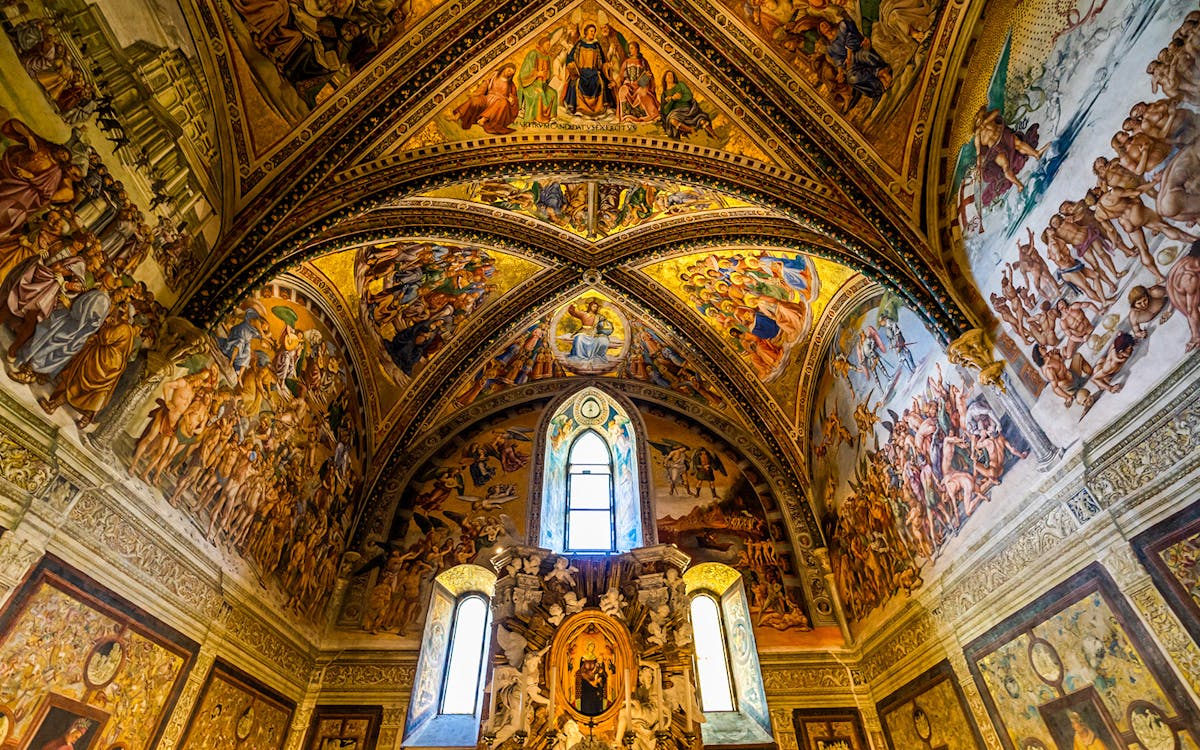
8. Fresco cycle in Tornabuoni Chapel
Location: Santa Maria Novella, Florence
Artist: Domenico Ghirlandaio
In Florence's Santa Maria Novella church, the Tornabuoni Chapel showcases some of the finest work of Domenico Ghirlandaio and his workshop, created between 1485 and 1490. The frescoes tell the stories of the Virgin Mary and Saint John the Baptist through a series of detailed scenes, including the Nativity of Mary, The Visitation, and The Baptism of Christ. What makes these frescoes particularly interesting is how Ghirlandaio incorporated portraits of real Florentines into the biblical scenes - members of the wealthy Tornabuoni family and other prominent citizens appear alongside religious figures. The natural light in the chapel works beautifully with Ghirlandaio's colors, bringing the scenes to life. These frescoes were painted during Florence's golden age, when the city was a major center of art and culture, supported by powerful families like the Medici.
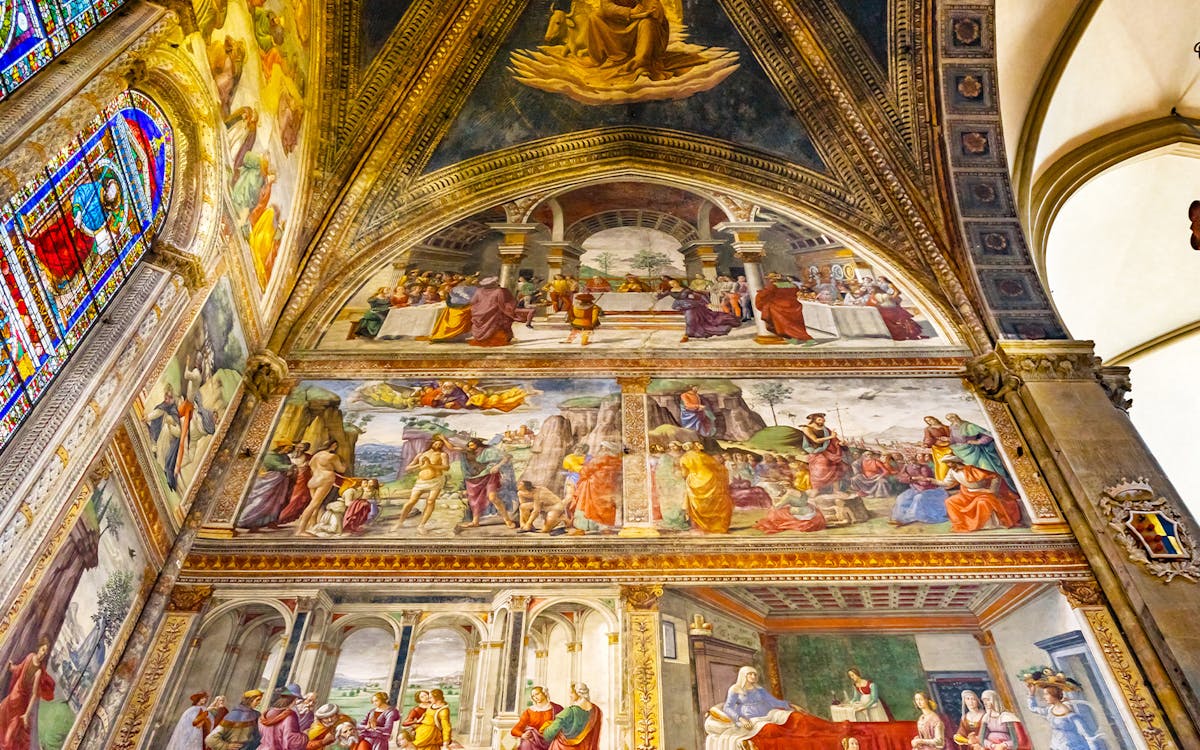
9. The Baglioni Chapel frescoes
Location: Collegiate church of Santa Maria Maggiore, Spello
Artist: Pinturicchio
The Baglioni Chapel sits in the medieval town of Spello, inside the church of Santa Maria Maggiore. Here, Pinturicchio created some of the most colorful and detailed frescoes of the Renaissance period. The walls and ceiling tell stories from the lives of Mary and Jesus through three main scenes: The Annunciation, The Adoration of the Shepherds, and The Dispute with the Doctors. If you look carefully, you can spot something special - the artist included his own self-portrait in the work. The chapel is located in one of Italy's most charming small towns, where you can also explore ancient Roman walls and quiet piazzas after your visit.
10. The vaulted ceiling in Santa Maria Maddalena
Location: Rome
Artist: Michelangelo Cerruti, Giovanni Battista Gaulli
Just a short walk from the Pantheon in Rome, you'll find the Church of Santa Maria Maddalena, a beautiful example of Rococo architecture. The church's elaborate facade, designed by Giuseppe Sardi, gives you a hint of the treasures inside. The real highlight is the vaulted ceiling, where Michelangelo Cerruti painted scenes from Mary Magdalene's life. Two scenes stand out in particular: the "Raising of Lazarus" and the "Glorification of Mary Magdalene." The way Cerruti used light and color makes the ceiling look like it opens up to the heavens. The church has been an important pilgrimage site for centuries due to its association with Mary Magdalene and its stunning artistic treasures. The neighboring chapels feature additional works by Giovanni Battista Gaulli, known for his masterful use of perspective and dramatic compositions.
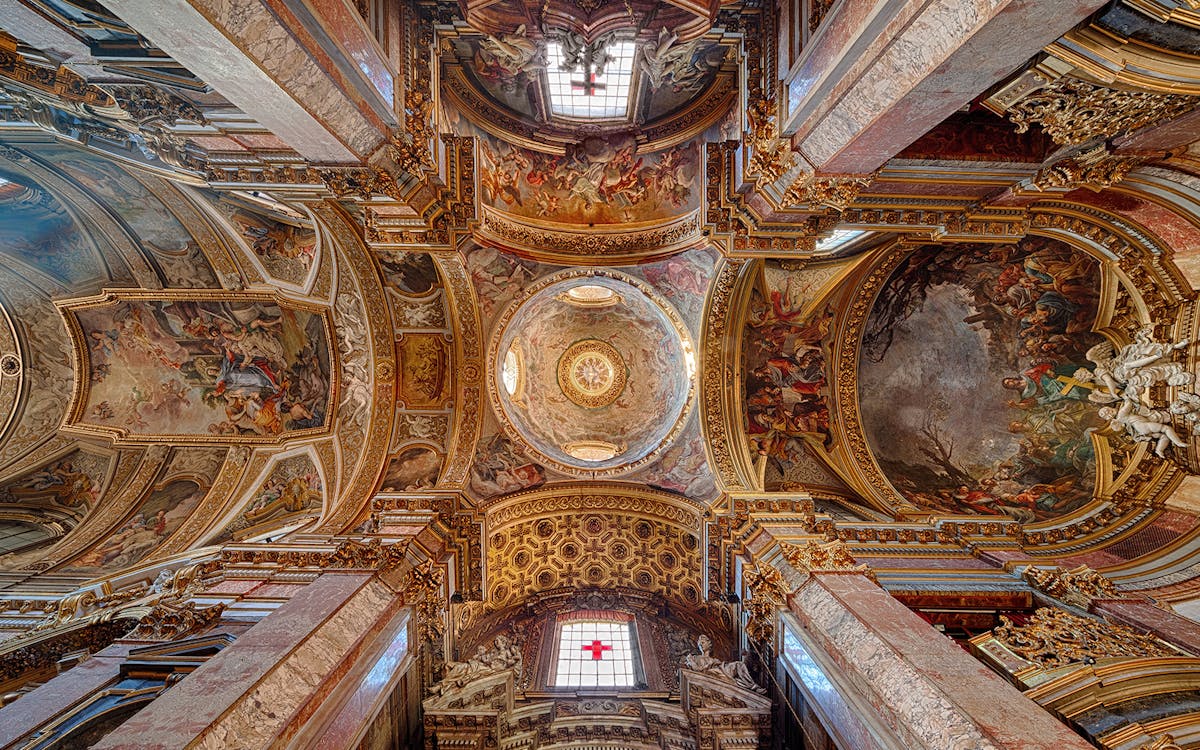
11. Church of St. Ignatius of Loyola at Campus Martius
Location: Rome
Artist: Andrea Pozzo
If you've seen those jaw-dropping fresco reels on social media, chances are they're from Rome, and one of the most stunning examples is found in the Church of St. Ignatius of Loyola at Campus Martius. The main ceiling fresco, "The Glorification of St. Ignatius" by Andrea Pozzo, is famous for its clever trick: what looks like a soaring dome is actually painted on a flat ceiling. This creative solution came about because the church couldn't build a real dome due to budget constraints and concerns about blocking light to nearby buildings. Pozzo's work features detailed scenes of saints and angels appearing to float high above, all centered around St. Ignatius. The painting technique, known as trompe-l'œil (meaning "deceive the eye"), is so convincing that most visitors have to look twice to believe it's just painted on a flat surface. The church's beautiful Baroque interior, with its gilded details and elaborate altarpieces, makes it well worth a visit.
